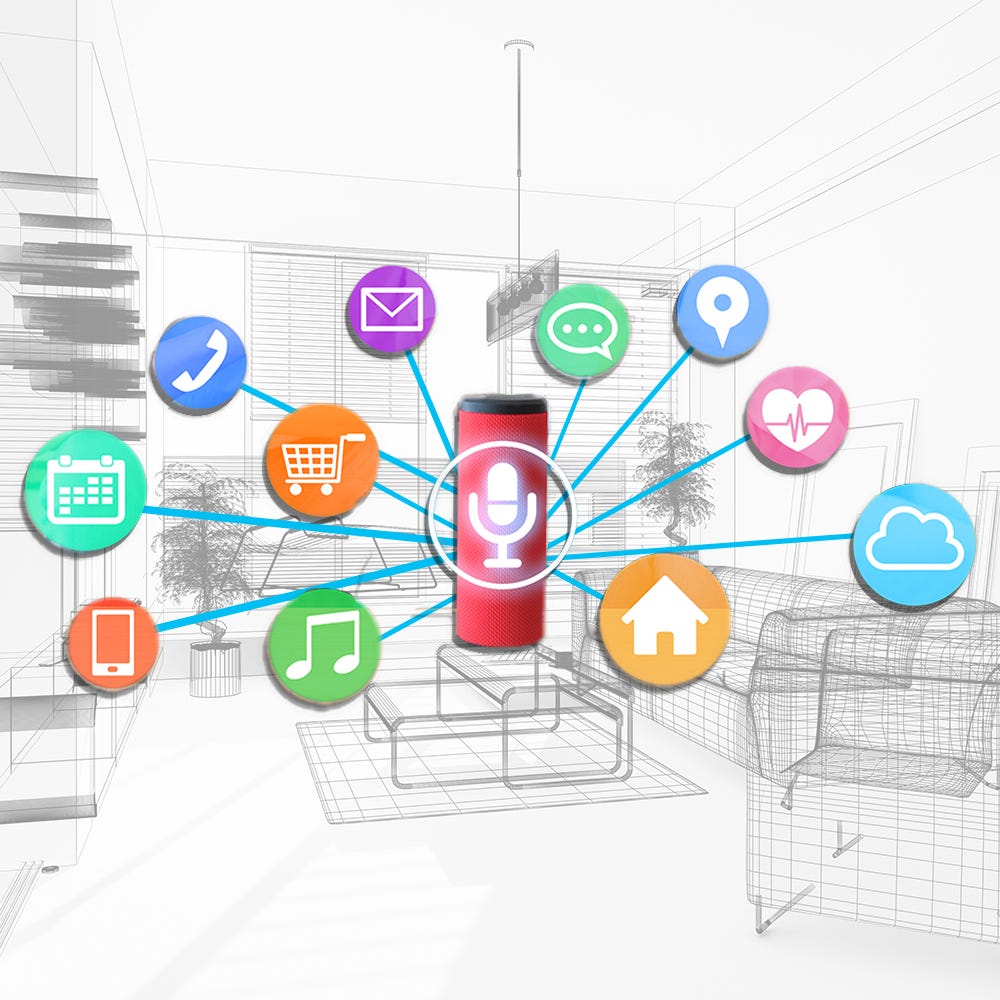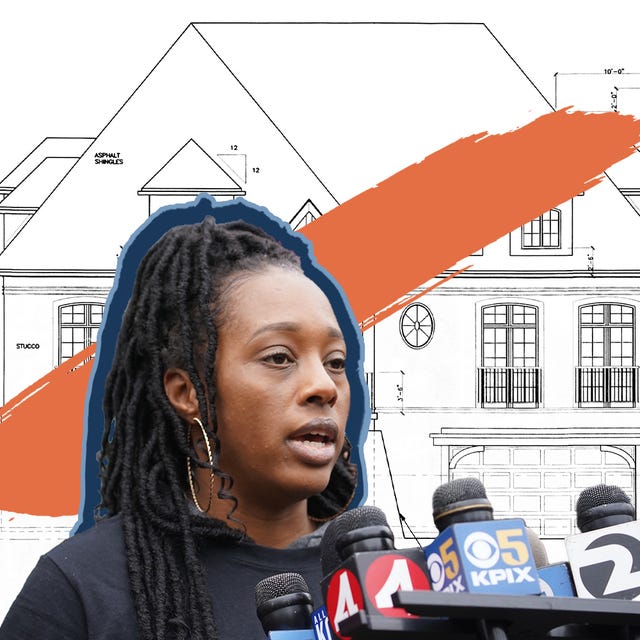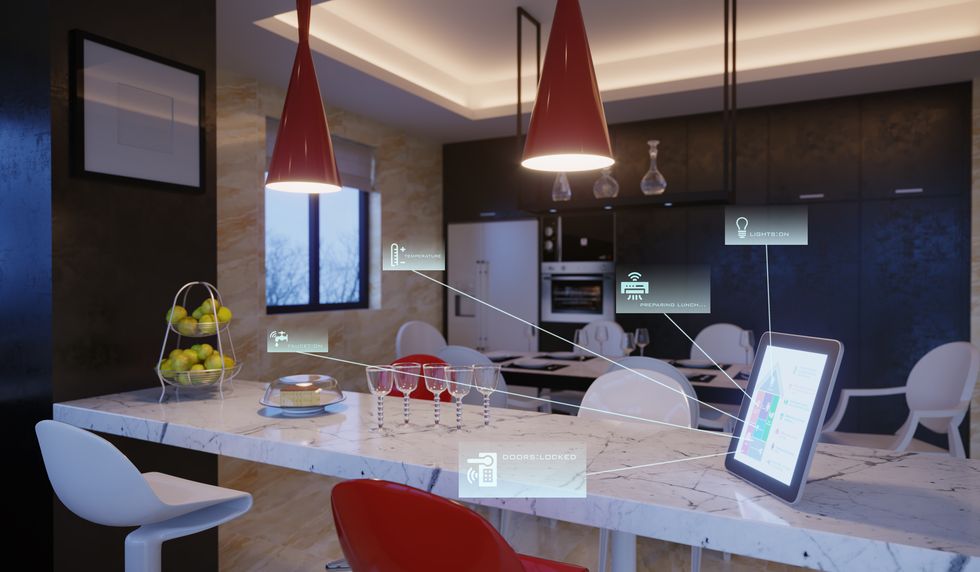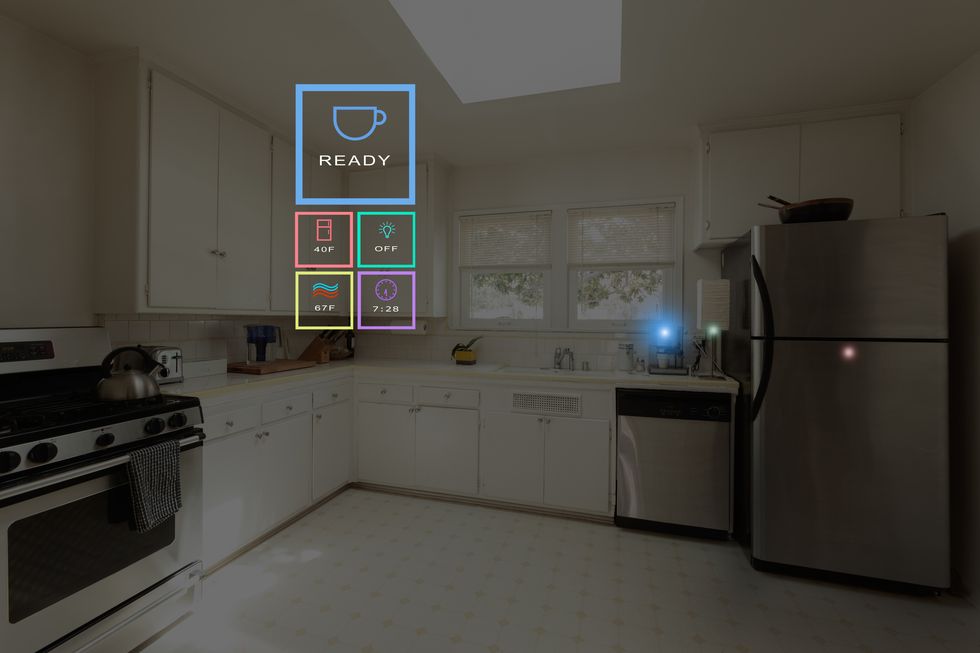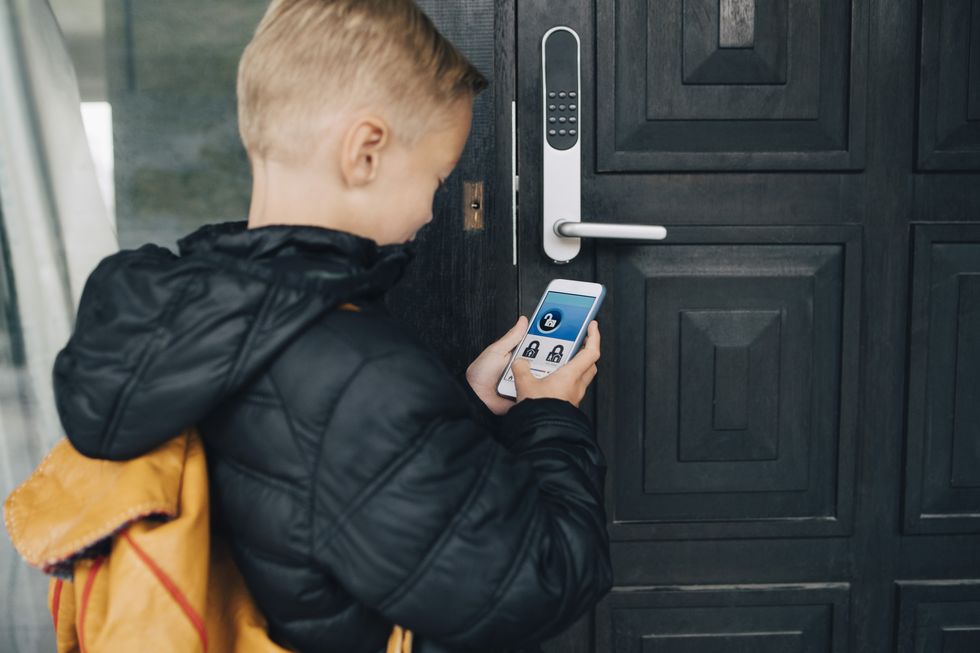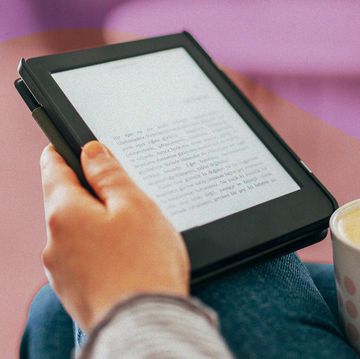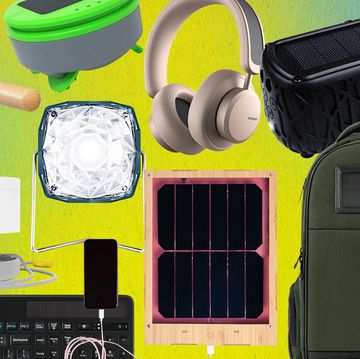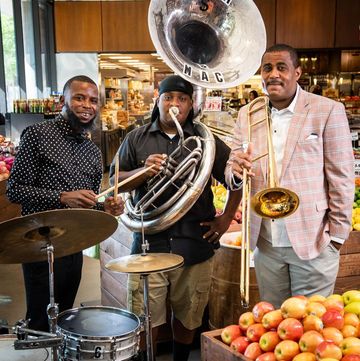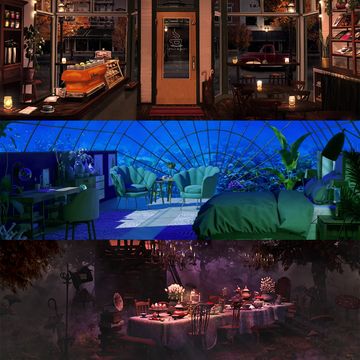How we keep our home reflects our inner selves. Our homes aren’t just about furniture, fixtures, and decor — they’re about emotional safety, security, and harmony. Our home represents our growth and ongoing development, our dreams both fulfilled and yet unmet, our loves, desires, failures and successes, fears, and triumphs. Amid a global pandemic that is still holding a grip over most of the world, our homes, and our home lives, have been greatly challenged. With that, Shondaland decided to explore the many facets of home, from cultivating a cozy atmosphere to facing the threat of homelessness, in the hopes that these stories inspire you to delight in, or simply make the most of, whatever space you call home.
When’s the last time you got to luxuriate in a bath?
One where the water was steaming, but not scalding. The lights — dim enough to be relaxing, while still allowing you to languidly scan a magazine. There’s some chill music in the background — like Stevie Wonder or Stevie Nicks — and the subtlest hint of fragrance in the air.
And what if this self-care scenario had been prepped for you in advance, by your home itself?
What if on the way home from running errands, you’d been able to open an app, tap “Self-Care Sunday” and set the necessary details in motion?
The system would dim the lights, fill the tub with water set to your desired temperature, trigger the diffuser to perfume the air, and even get Dreams to play right as you walked through the door. All you’d have to do is slip out of your clothes and sink into bliss.
It might seem like an expensive, science fiction-influenced dream, but according to experts working in the realm of connected devices at companies like Google and IoTeX, that heavenly future isn’t too far away.
A variety of trends are converging to make the vision of a more connected, convenient, and “smart” home an attainable reality. And given that we’re all spending considerably more time in our homes, that’s definitely a good thing.
But first, what do we mean by “smart home?”
While there’s no official definition, the phrase “smart home” typically conjures up one of two scenarios that you’ve likely seen in a movie or TV show like Mr. Robot, or even a Home Depot commercial.
The first is a home full of gleaming, touchscreen-enabled refrigerators and washing machines that are connected to the internet. These appliances alert the user that they’ve run out of a key ingredient for dinner — and can even put in an order at the local supermarket — or help ensure that a load of clean laundry doesn’t get funky sitting in the washer overnight.
This is the premise of the Internet of Things (IoT) — connecting everyday objects to the internet to send and receive information. IoT makes objects and appliances “smarter” and more useful. In this case, the appeal of the IoT-powered smart home is convenience powered by automation.
The second most common scenario is a little more dystopian.
This smart home is also tricked out with internet-enabled devices, like a security system that can scan the homeowner’s face to be sure that they’re cleared for entry, and lights that automatically brighten (or dim) based on whether someone enters or leaves the room.
Inevitably, some computer hacker hijacks their way into this high-tech home and turns it against the owner — locking doors that should be open, scalding them with hot water when they get into the connected shower, and then plunging them into complete darkness just as they try to make their way down a steep staircase in a panic.
The smart home becomes a sinister home in this case, highlighting the security concerns that can stem from using multiple devices to connect our brick and mortar domiciles to the worldwide (and wild) web.
In reality, the current state of smart homes is a hybrid of the two — there are varying levels of connectedness and convenience, a sliding scale of safety and risk, and a wide variety of pricey devices alongside more affordable gadgets.
Smart technology to make our homes more “helpful”
Broadly, there are five categories to consider in terms of a connected living space: Energy, entertainment, safety and security, communications, and appliances.
No matter the category, the devices in a smart home are typically controlled through software that’s accessible via laptop, phone, tablet, or some combination of the three.
Getting all of those devices to work together seamlessly is the true promise of a smart home — and it’s the primary goal that Michele Turner, Senior Director of the Smart Home Ecosystem at Google, is working toward.
“We think of the smart home as the helpful home, with the sweet spot being how various devices can work together to help save people money or time,” Turner said.
In 2014, Google took pole position in the smart energy category by acquiring Nest — the startup whose connected thermostat became one of America’s first well-recognized smart home brands. As of 2018, the company had sold over 11 million Nest-branded devices (most of which were likely thermostats, because a solution for managing your heat or AC and saving money in the process is pretty much a no brainer).
Google also manufactures other devices like smart speakers, but Turner’s team is focused on broadening the Google-powered smart home ecosystem by developing partnerships with connected device makers around the globe.
That’s because fulfilling the promise of the smart home for the everyday consumer — not just a tech-savvy, early adopter — means ensuring that “tens of thousands” of affordable gadgets like smart TVs and picture frames are compatible with Google Assistant, the operating system that lets people do things like set alarms and shop online using their voices. (The other most well-known smart operating system in the U.S. is Amazon’s Alexa).
After energy, the next area of widespread smart home device adoption is entertainment.
For many people, Google Home or Amazon Alexa-enabled speakers were likely their first foray into the IoT, since they’re relatively inexpensive, accessible and fun. (And while Amazon no longer breaks out specific sales stats, just two years ago the company dominated the market by selling over 20 million Alexa-enabled Echo smart speakers).
In terms of communications, devices like Facebook’s Portal — which is essentially a standalone, WiFi-enabled monitor that’s built specifically for video chatting — have surged in popularity. The communications category also encompasses smart home “hubs,” or touchscreen devices that help people manage the various connected gadgets in their home, in addition to keeping tabs on the daily routines of everyone in the household.
Meanwhile, connected security cameras (like Amazon’s Ring doorbell), smart smoke detectors, and smart light bulbs round out the safety-and-security category. Smart lights and security cameras, in particular, are helping drive adoption of the practice of “mockupancy” — or using smart devices to simulate normal at-home behaviors, so a house looks occupied when its inhabitants are actually gone.
Last but not least, the aforementioned items like smart refrigerators, connected coffee machines, and dishwashers fulfill the appliance category, a market that has steadily grown over the past decade to reach nearly $7.5 billion worth of annual sales in 2018.
The smart home experience can actually be dumb (and disjointed)
As evidenced by the complaints in customer forums for devices like the Amazon Echo Link or the Google Nest community, the current state of the connected home can be a disjointed and janky experience.
That’s mostly because of the unique operating systems that control each device in the background, as well as the different ways that any single connected device can transmit and receive data (whether it’s through WiFi, Bluetooth, or another wireless communication protocol called Zigbee).
For example, up until very recently, if you wanted to create your own mini-disco experience at home with a mobile phone, a portable speaker from a brand like JBL, and a color-changing Philips Hue strobe light, you’d have to manage multiple apps, change settings individually on each device and then pray that your franken-situation came to life.
According to Greg Kahn, CEO of the Internet of Things Consortium (IoTC), a non-profit dedicated to driving growth and collaboration in the IoT space, the initial lack of cooperation between connected devices — technically called interoperability — was partly by design.
“When you look at [American] business, innovation and growth have historically been borne from a spirit of competition versus cooperation,” Kahn said. “For successful companies like Google or Amazon, or even a telecommunications giant like Comcast that provides your internet access, there wasn’t really an incentive for them to make their products and services work well together.”
But the breakout success of Alexa, Amazon’s voice-powered operating system (and subsequently the Google Assistant) ushered in a “sea change,” according to Turner.
That’s because giving people the ability to control simple things like lights and music with their voices — instead of having to mess around with multiple apps — was a “major step forward in terms of smart home accessibility, and so we [at Google] and Amazon, and many other manufacturers realized that it was time to provide that level of interoperability.”
To that end, late last year, Google, Amazon, Zigbee and a host of other companies like IKEA and Samsung announced the launch of Project Connected Home over IP (or CHIP), which is an effort to develop a set of common rules or standards that would increase compatibility between smart home products moving forward.
A smart home is a secure (and private) home
Developing strong, universal safety protocols for smart home devices is a key focus of Project CHIP, since any gadget that connects to the internet can be vulnerable to hacks and other security breaches.
But if you ask Jing Sun, co-founder of IoTeX, a connected device and software infrastructure startup, the companies behind Project CHIP are overlooking two significant issues when it comes to making a smart home secure, safe, and private.
First is the issue of having all the data that a connected device can generate — where it’s located, how long it’s being used, what accounts are logged in, etc. — accessible through a “single, centralized system,” Sun said.
When you use a voice-activated speaker to play a song on Spotify, for example, the speaker has to actually process what you said. And though it seems to happen almost instantaneously, it’s actually sending your command to another computer somewhere called a server. That process of sending information back and forth happens with other smart devices too, and for Sun, having all those voice snippets, data points and other little pieces of personal information accessible from a single place is a problem.
“External hackers can attack any single type of server and then millions of users’ data will be compromised,” Sun said. “This has already happened many times to big companies [without connected devices], and as more and more people buy them, this possibility for a breach will increase.”
The second issue is about who has legitimate access to that data (and what they can do with it).
As we’ve noted, the terms of service (TOS) agreements that come along with various devices often disclose the ways in which the manufacturer can store, sell, or otherwise use the data they generate, in language that’s hard for the average person to understand. Keeping track of which companies can access the data from a device that lives in an intimate area like your bedroom or bathroom can potentially take the “creep” factor to a whole new level.
That’s partly why Sun’s company exists. IoTeX is working with third-party device manufacturers to develop an ecosystem of smart devices that don’t use “centralized server technology,” and don’t make users choose between privacy and convenience. “The Internet of Things is just the first wave, we’re trying to build the Internet of Trusted Things.”
Still, the big manufacturers do seem to be addressing privacy and security in a more upfront manner when it comes to smart home devices in particular.
“We understand that privacy is at the crux of the helpful home,” Turner said. “People are not going to integrate [these devices] into their lives if they don’t feel safe about things like how we encrypt their data, and what’s happening to their audio recordings.”
Turner also said that the information Google’s connected devices collect — data points like knowing whether light or speaker is turned on or off — is kept separate from data that the company uses for its advertising products.
The living, breathing, ever-evolving home of the future
But the true potential of a smart home goes even further, according to Kahn — beyond privacy, security, or convenience — to allow our living spaces to actually take care of us from a holistic perspective.
As our population ages, for example, homes will need to accommodate people’s decreasing mobility and allow for more frequent (but potentially remote) interactions with doctors.
In that use case, a truly smart home would be able to pull in real-time health data from a personal device like a fitness tracker or Apple Watch, integrate it into a smart communications device (like the Facebook Portal) and funnel that information to the doctor in advance of the telemedicine “visit.”
“The initial framework around a smart home was this idea of how things could be automated and optimized for efficiency,” Kahn said. “But what we’re seeing now, especially in the wake of COVID, is that we actually do a lot more than living in these structures. We’re working in our homes, we’re trying to stay entertained, those of us with kids are trying to educate them, and a smart, connected home will actually help us do all of those things.”
Tameka Kee curates unforgettable experiences and thought-provoking conversations at the intersection of advertising, technology and culture. Find her on Twitter @geekychic
Get Shondaland directly in your inbox: SUBSCRIBE TODAY
